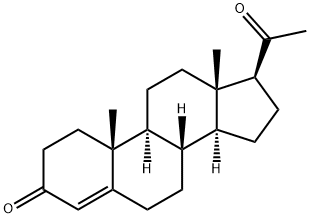Progesterone is a hormone released by luteal cells in the ovaries which contains 21 Carbon Atoms. Progesterone is also a crucial metabolic intermediate in the production of other endogenous steroids. There are two crystal forms of progesterone, that are type-α and type-β, the two types have similar physiological activity. Type-α is precipitated from dilute ethanol as orthorhombic white prismatic crystal, while type-β is orthorhombic white needle crystal, they are both insoluble in water, but soluble in ethanol, ethyl ether, chloroform, acetone, dioxane and concentrated sulfuric acid.
Progesterone can be released by the ovary, placenta and adrenal cortex. Its physiological function mainly manifests in promoting estrogen treated over thicken lining of the uterus to continue the development, proliferation and thickening and hypertrophy, soften and secretion of mucus in order to make good condition for implantation of the fertilized egg. After the implantation, early stage survival and development of fertilized egg is also under the control of the high progesterone release. As a result, progesterone is a very important hormone in the female reproductive system, and it is also an important intermediate in the biosynthesis of steroid hormones. All steroid hormone releasable glands can produce progesterone, but only ovarian and placenta can release progesterone as the main hormone. Ovarian will release large amount of progesterone in the luteal phase after ovulation by granulose luteal cells, so progesterone is also named as progestin. Progesterone will decrease in result of corpus luteum atrophy. For normal women, placenta will becomes the main organ maintain progesterone after 8 to 9 weeks of pregnancy, accompany with the ovary releasing until the end of pregnancy.

